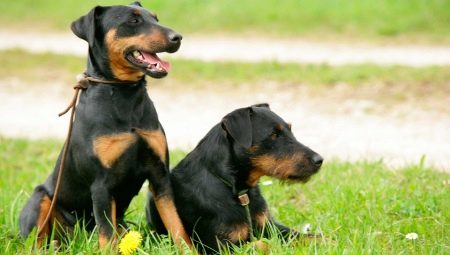Most breeds of terriers were bred in the UK as hunting dogs, but by now they have mostly turned into pets and cute companions. The yagd terrier stands out from this list by the majority of its main qualities - it comes from Germany and still remains an avid hunter, which in most cases is not recommended to be set up in a city apartment.

However, if you are not fond of hunting, this does not mean that you definitely do not need such a dog, because it has a number of characteristics that make it an excellent pet.
Origin history
In the century before last, when the majority of modern terrier breeds appeared, new breeds of dogs were often bred situationally - they do not have a definite “founding father” who would be engaged in full-fledged breeding, setting generation to generation to improve certain characteristics of the animal.
Then ordinary people who needed a dog to hunt or protect the territory from rodents were looking for puppies in the eye that could solve the problem. In this regard, the German Reed Terrier is different from most of its relatives - it is a factory breed, that is, it was created consciously, already understanding what should happen in the end.

The yagd terrier is an older fox terrier, which has been improved by adding extraneous impurities from other hunting breeds. By that time, Fox had been considered the top hunting dog for several decades - it was widely used by European hunters, since such an assistant turned out to be invaluable not only in the struggle inside the hole, but also in the pursuit of prey such as hares or even ungulates.
At the same time, the dog was highly appreciated from an aesthetic point of view - it was distinguished by its attractive appearance, and therefore became a regular at various dog shows. It was this multifaceted nature that largely pushed the creator of the German hunting terrier to create a new breed.
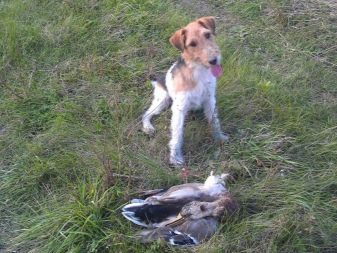
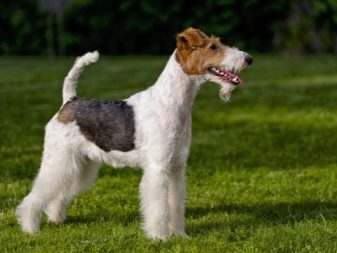
Breeders of those times were madly obsessed with exhibitions and often forgot that the hunting dog should not be a handsome man in the first place, but a seasoned brawler.
Walter Zangenberg was also involved in breeding fox terriers, but hunting was his favorite hobby, and he decided to focus on the fighting qualities of the dog. Hunters have repeatedly noted that black and tan individuals, strongly reminiscent of the classic Old English Terrier and not considered handsome, showed themselves to be much better in combat conditions.
In 1923, a German specially acquired “defective” puppies - their mother was almost black, because another breeder gave him the kids for a penny. The brood consisted of two females and two males, which Tsangenberg crossed with other color-coded fox terriers that showed wonderful properties during the hunt.
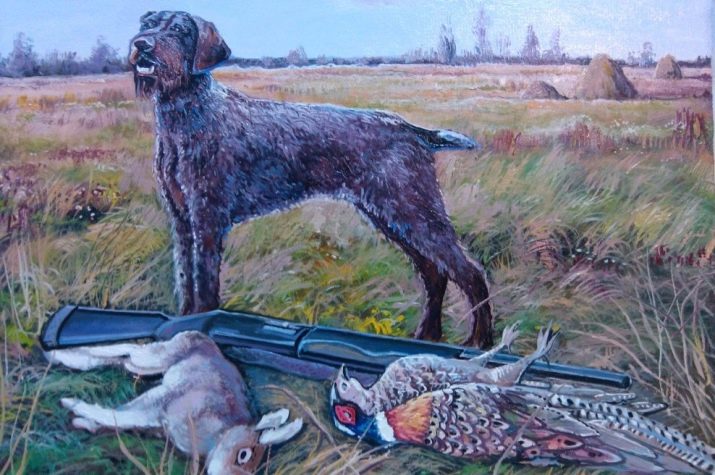
For the German breeder, the white color of the coat, which is always present in the color of the real fox, became a sign of marriage - if it was too much, the puppy was rejected.
Surprisingly, Nazism, which is gaining popularity, really helped in the appearance of the new breed. - his ideology was little combined with the fact that something good could be produced abroad, because many other German breeders joined in the development of their own hunting breed, which would be very different from foreign ones for the better. Already in 1926, Zangenberg organized
The German Reindeer Club, as well as formulated the main principle of the new breed: no exhibitions, most importantly - the maximum practicality for hunting applications. The new organization attracted the famous dog specialist Herbert Luckner to its activity, and the next year a review was held, in which 22 dogs took part.
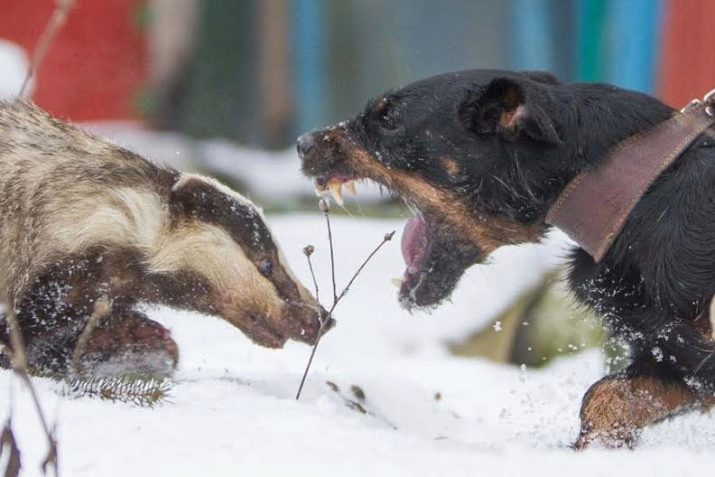
However, today's yagd terriers are very different from those that were displayed in the 20s of the last century. The fact is that at first the gene pool was very limited - we recall that there were only four ancestors, so after a few years there was a risk that the new breed would simply degenerate due to incest. In order to avoid such a development of events, Old English terriers, as well as welsh, who had almost disappeared by that time, were written out of England.
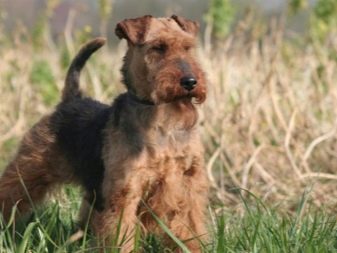
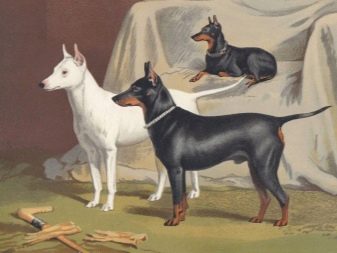
In 1934, the first official standard appeared, in which practically nothing was said about appearance - it simply should not have prevented the dog from doing its job. At the same time, a lot of “professional” requirements were put forward - the dog must be physically resilient, having the ability and desire to confidently follow the trail and bark loudly when it detects prey, the absence of any fear of water or a fight in a confined space.
Already in the 40s, the creation of a new breed was finally completed, and at that time yagd terriers were considered the most aggressive dogs in relation to inhabitants of burrows.
The exterior of the dog was so unpretentious that no one even thought to buy it as a companion or pet - it was a product purely for hunters.
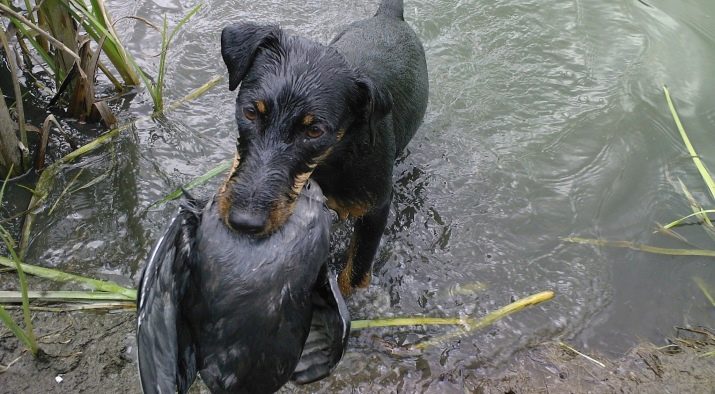
After the Second World War, Germany was divided, so the development of the breed went in two separate ways. There were very few representatives of the breed in the GDR, and for a long time the emphasis was placed on a simple increase in the population, which is why the German yagd terrier was close to extinction here.In addition, the country was not a member of the International Cynological Federation (ICF), and therefore, representatives of the Federal Republic of Germany went to exhibitions, where there were much more of these dogs and the breeding successfully continued.
The ICF recognized the breed in 1954, but the English and American Kennel clubs of the yagd terrier were not included in the official lists - an unpretentious appearance affected. Despite the lack of official status, these dogs still came to the States, but they were never popular here - the local hunters used the help of local dogs. Animals came to the USSR from the beginning of the 1970s and managed to take root there.
Breed description
The main feature of the yagd terrier is that it is a purely hunting dog, and not an exhibition dog - it looks unassuming for those who are looking for aesthetics for the sake of aesthetics, but it is an example of functionality.
An adult dog is distinguished by a relatively small, but firmly downed body - it is ideal for penetrating burrows and engaging in mortal combat there. The size of the dog is modest, but clearly standardized: the growth is 33-40 cm, while the circumference of the body should be 10-12 cm more than the height at the withers.
There is no other dog breed in the world where a similar proportion would be established, but in this case it is fundamentally important: an even more powerful animal will not be maneuverable in a burrow, and a smaller breast volume will not be enough for good stamina and a loud voice.
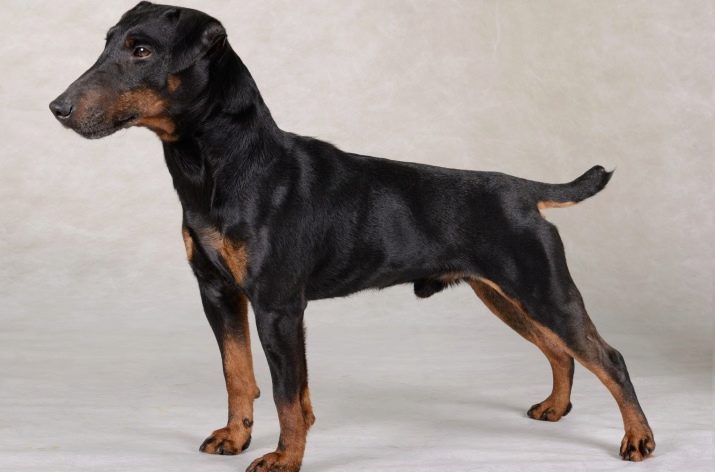
The weight of the animal differs depending on gender: males are heavier and weigh about 9-10 kilograms, while their girlfriends are on average one and a half kilograms lighter.
The head of the animal has an elongated shape and resembles a pointed wedge, its main detail is powerful jaws with a strong grip and a pronounced chin. The bite is scissor-like and very dense, it is often impossible to break out of the grip of such a dog. The eyes of the yagd terrier are small and hidden quite deep in the skull box, while even the look of the animal shows that it is not afraid of anything and is extremely determined.
Experts say that immediately before the skirmish with the enemy, the gaze completely becomes “snake” - there is nothing in it but coldness and ruthlessness. The ears are in the form of the Latin letter "V", they hang down freely, being slightly deflected towards the forehead.
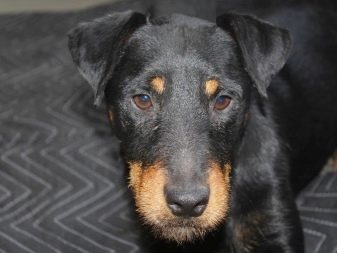
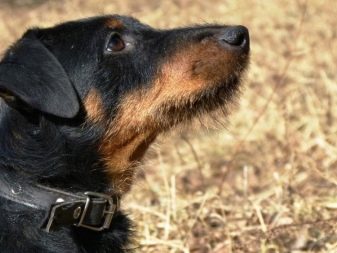
The head is attached to the body with a powerful, but relatively short neck, which flows into a strong back. The tail, as befits a normal dog, the animal holds either straight or slightly raised - this characteristic simplifies the owner's task of extracting the pet from the hole. Oval paws on voluminous pads of rigid consistency serve as a support for the body.
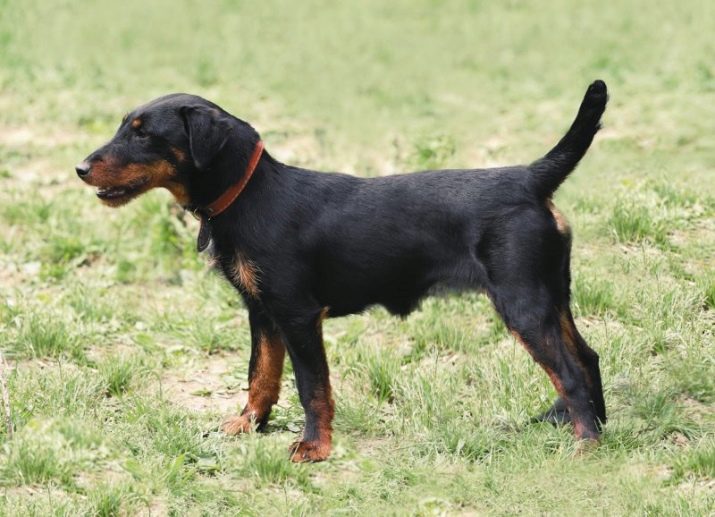
Representatives of the breed are divided into two types - smooth-haired and wire-haired, although usually there are no obstacles to their mating among themselves. Moreover, many hunters value above all just the intermediate version of the coat. Regardless of which species the individual belongs to, its coat is always distinguished by its high density and rough texture, it fits snugly to the body of the dog and combines with a thick and warm undercoat.
The peculiarity of the hairs is that neither dirt nor snow sticks to them, and even they do not need any kind of care, although they warm their four-legged owner in accordance with the best expectations. For a real toy terrier, the main requirement for which is the maximum practicality of the characteristics, the principle is to completely cover the body with hair - the stomach and inner thighs should also be protected. As for the color, the combination of black and dark brown with tan is dominant here, graying or the presence of a “mask” is possible.
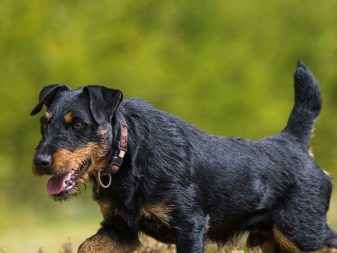

The yagd terrier is adapted to the most extreme conditions and does not require any careful maintenance, it can easily live in even an unheated room - for example, on a balcony or in a booth on a personal plot.
Character
The yagd terrier was conceived as a typical bully, which is a quite useful characteristic for a normal hunting dog. The beast for this dog is the causative agent of simply unlimited aggression, in a fit of rage, the animal rushes to attack even the enemy who, it would seem, can crush him with one size. The dog is brutal and least of all thinks about how to get off with minimal losses - he will not back down from his own, because such pets can easily be seriously injured or even die on the hunt.
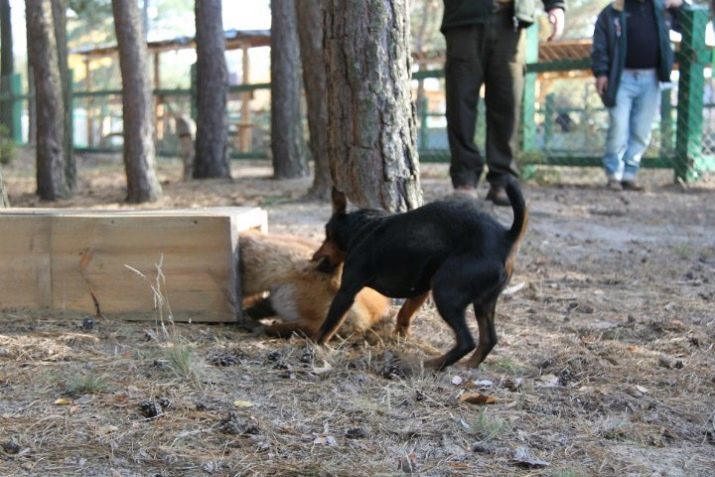
It is foolish to expect from a pet with such characteristics that he will be subservient or extremely obedient. In the conditions of the hole, the dog must constantly demonstrate independence and determination, he is not afraid of anything and does not compromise, and all these characteristics inevitably translate into everyday life. In the language of psychology, this is a very strong personality, and if you take such a puppy home, you should prepare for the fact that the upbringing should be started as early as possible.
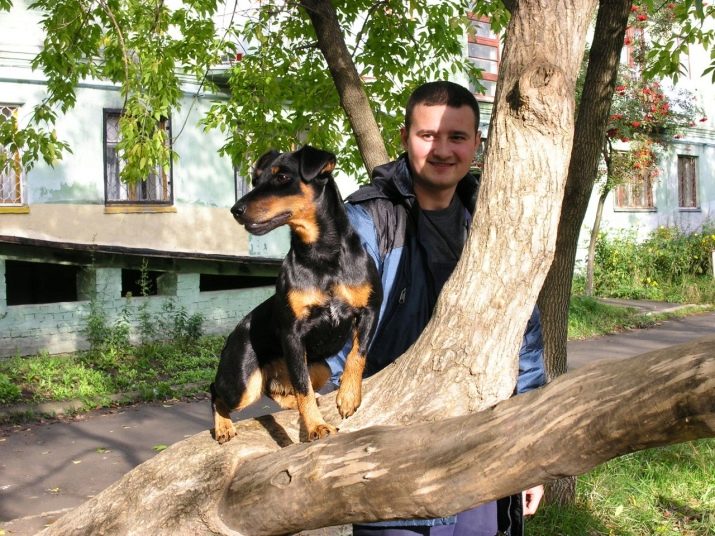
And any mistake in this can coolly come back to the owner.
The yagd terrier often demonstrates excessive independence, therefore it should not be given slack - the owner, who wants to control the situation, must constantly demonstrate rigor. A distinction should be made between severity and cruelty - the second is completely inappropriate, especially since it is better not to provoke such animals once again.
If you treat the dog wisely, he will surely become attached to you, but his cordiality applies only to well-known people. This is not the dog that joyfully meets any person. In most cases, the dog is completely indifferent to strangers, however, it can be aggressive and attack, therefore, in crowded places it is worth watching more closely.
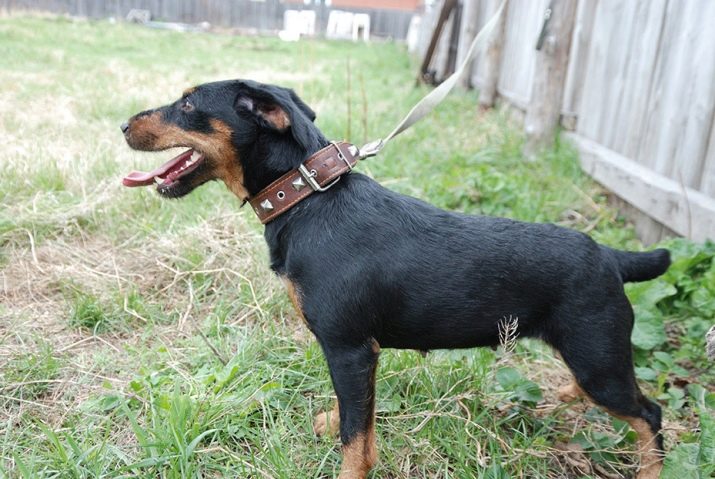
The owner of the yagd terrier is always one - the dog can normally interact with the rest of the household, but will not obey them. Representatives of the breed are distinguished by their tolerance for the presence of living creatures, they often coexist peacefully even with other pets, but the option is also possible in which the animal will arrange a real war for your cat. To solve this problem is extremely difficult - if you remember, the four-legged hunter in pursuit of prey always goes to the end and will not miss his own.

With innate stamina and adaptability to significant physical exertion, it would be foolish to keep the game terrier in captivity - at least it will be sad and will not feel happy. For this reason, a dog, even if it is used as a guard dog, is never put on a chain. Street maintenance on a personal plot is quite possible, but only in the presence of a spacious kennel and the same enclosure.
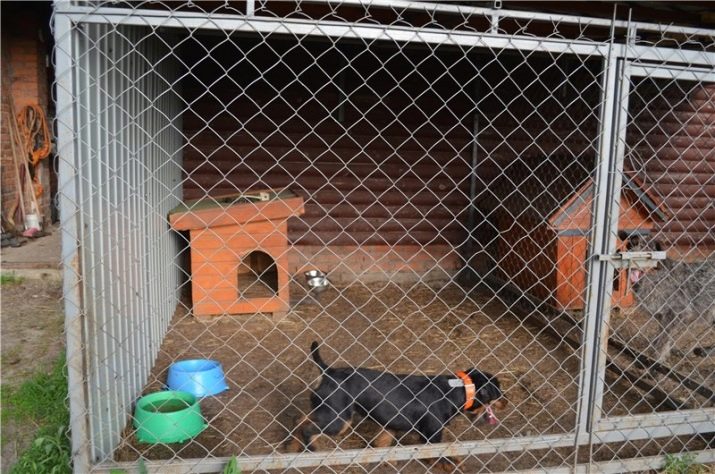
If you decide that your pet will live on the street, take care of the safety of neighbors and any pets - they must be reliably protected from your beast, because it’s not worth checking his hunting instincts again.
Maintenance and care
In the process of breeding, the creators of the breed made the main emphasis on precisely simplifying the care of the animal, minimizing it. It is not in vain that the yagd terrier is still not recognized as a separate breed either in the USA or in the UK - in terms of appearance it looks a lot like a mongrel, and an ignorant person does not recognize him as a thoroughbred dog, but then it will be necessary to look after such a pet more carefully than for the unpretentious street four-legged.
At the same time, experts still advise combing out the dog’s hard coat at least once a week - this is necessary for elementary accuracy, and so that bacteria do not start in the accumulated pollution.
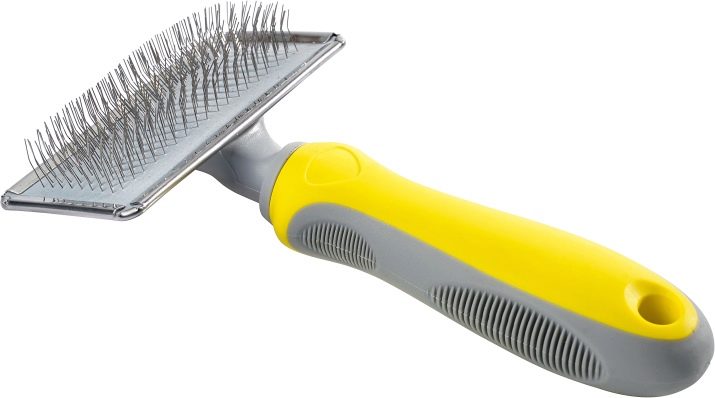
Animals with significant stamina usually need regular use of their abilities, and The yagd terrier is exactly that dog who loves long walks and really needs them. Experienced dog breeders indicate that representatives of the breed walk for at least an hour, and the more often you do this, the better for the pet to feel.
In a personal plot, the pet’s need for walking is partially leveled, provided that it is not tied and closed in the aviary - that’s why they say that the animal cannot be kept on a chain. As for the apartment, the question with it is complicated: on the one hand, such a friend of a person here will not be able to walk around at all and will feel constrained, on the other hand, an intensive mode of walking along the street would probably solve the problem.
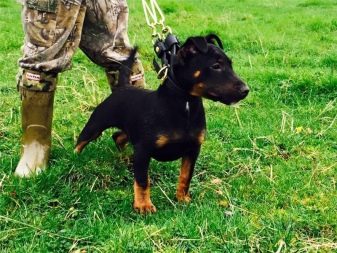

Jagd terriers are credited with immunity at the level of the dogs most resistant to various infections, but you need to consider the conditions in which its owner lives. If a slightly more painful dog is constantly looked after and monitored, then a dog of this breed is acquired by those who do not need extra troubles, and the fame of the "unkillable" health of the pet leads to the fact that his condition generally starts to drift. At the same time, the animal often lives on the street, and even if it doesn’t, it requires regular long walking, so it can easily catch an infection or parasites in the yard.
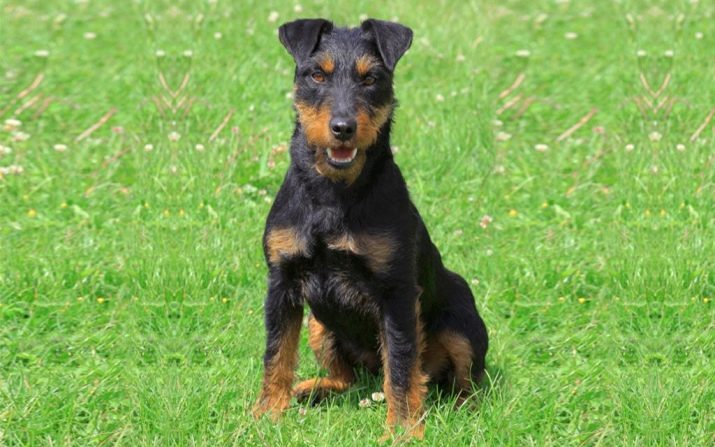
The probability of such a development of events is especially high if the four-legged is used for its intended purpose, that is, for hunting.
In order not to bring the situation to extremes and not run into unnecessary problems, it makes sense to carry out certain preventive measures - then the dog will become truly immortal. All necessary vaccinations must be done on time. (it is better to consult a veterinarian who knows the specifics of the region about their list), in addition, regular treatment of wool from parasites should be carried out. Helminths often pester yagd terriers, therefore anthelmintic preparations must be constantly present in their feed.
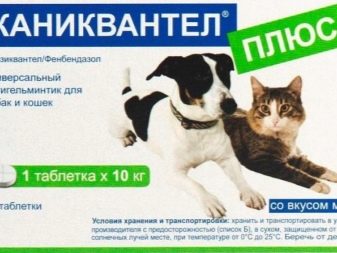

A certain danger to health is also dirt, which during outdoor walks and especially digging holes can clog into the most unexpected places. The ward's ears and eyes are subject to regular inspection, from there, with the help of a wet wipe, any foreign contaminants must be removed, and if any pathologies are found, you should not rely on the bulletproof immunity of the dog - contact your veterinarian.
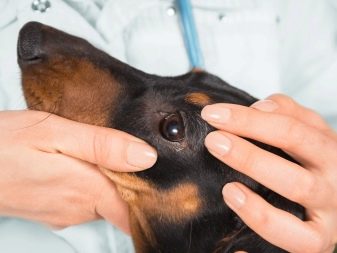
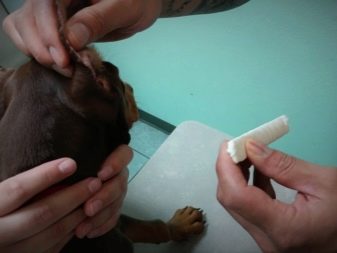
A peculiar indicator of the correctness of the content of the yagd terrier is the condition of its claws. If the dog walks enough, they themselves will wear out to the length that does not particularly interfere with the animal and does not harm the floor covering. If the claws nevertheless grow back, they must be cut. This is useful not only for aesthetics and interior preservation, but also for the dog itself, which they interfere with normal movement.
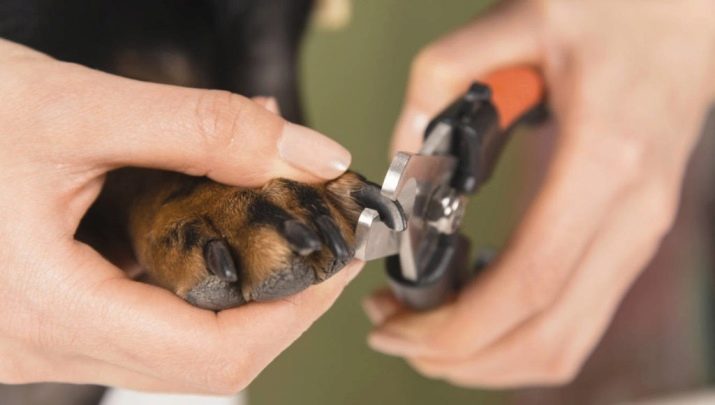
If the care is organized correctly and you carefully adhere to the simple principles described above, you can expect your pet to live 13-15 years.
What to feed?
On the one hand, the yagd terrier is unpretentious in everything, including food, on the other hand, a hunting dog should always be in shape and fully alert, and therefore the owner himself is interested in feeding his pet as efficiently as possible. As is the case with representatives of any other breeds, It is possible to make a diet of the beast both from factory dry feeds, and from independently selected products.

With dry food everything is clear - here the recommendations are the same for all dogs. The higher the class of the product, the better, and although premium and super premium cost significant money, it’s not worth saving on the health of a dog who risks his life in a fight with wild animals. Experts point out that certified products are not only completely safe for the pet’s body, but also contain all the necessary vitamins and minerals. At the same time, dry feeds practically do not contain water, which means that for their full assimilation, the animal needs constant access to drinking water.



If you decide to refuse the services of factory manufacturers and are ready to independently compose a diet for your dog, please note that all products must be fresh. Yesterday’s food should not be given to the dog - be prepared to cook it again each time. The list of allowed and necessary ingredients should include the following products.
- Meat. This component is fundamentally important for any predator, and doubly for a yagd terrier, because these are proteins that are responsible for building muscle mass. It is meat that makes the dog strong and capable of defeating any enemy in close combat. In this case, the digestive system of the dog is not always ready to digest excessively fatty foods, because pork or lamb are undesirable. It is better to focus on chicken, beef and turkey.
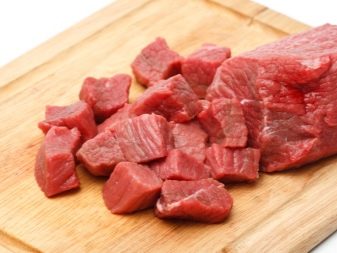
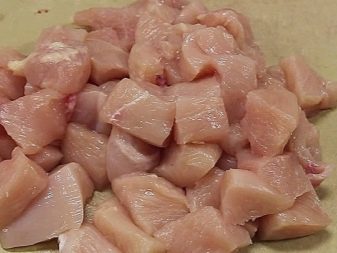
- Offal. In principle, they can be considered another type of meat - it is tasty, healthy, and relatively inexpensive. Hearts and lungs, stomachs and kidneys of a cow or bird will be just right.
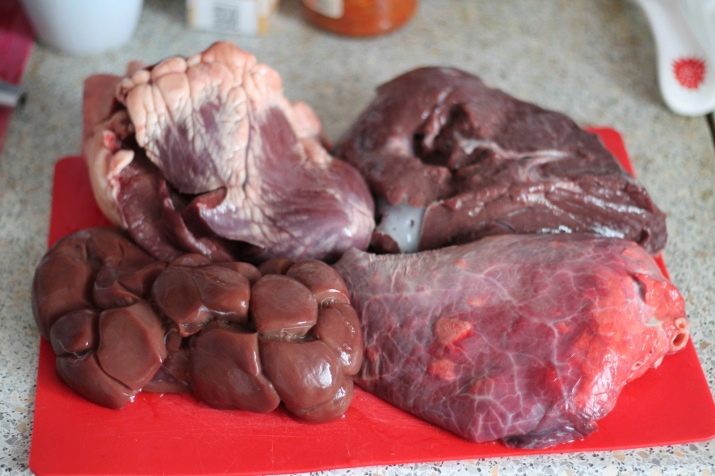
- Sour-milk products. Adult milk must not be given fresh milk to an adult yagdterrier, like most other dogs, because adult animals cannot break down lactose. At the same time, milk contains many useful components, which are also found in yogurt, kefir, fermented baked milk and low-fat cottage cheese, but lactose is no longer there.

- Cereals. The Yagdterrier is rightly one of the most active and mobile dogs. For a healthy individual, constant movement is the norm and indicator of normal health, and this requires a large amount of carbohydrates. A source of such can be the same products that are used for these purposes and by a person - buckwheat and oatmeal, millet and rice.

- Vegetables. For good health and full metabolism, the dog needs a complex of vitamins and minerals, and their first source is vegetables. Decorative dogs are often fed with fruits, but the yagd terrier can get everything you need from just improvised food - zucchini and beets, carrots and cabbage, as well as greens. All this can be given both raw and boiled.
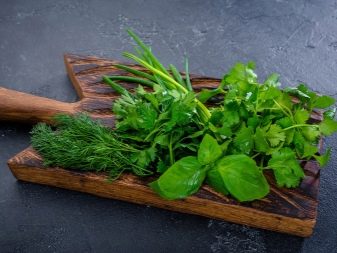


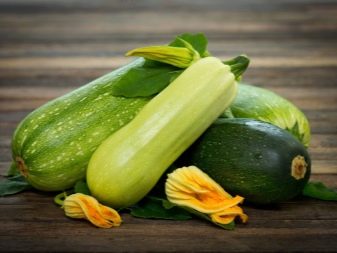
As with the vast majority of breeds, Terrier is forbidden to feed food from the human table. - The dog’s digestive system is fundamentally different and will not cope with such a challenge. Sweet, spicy, spicy and fatty foods, as well as smoked meats and pastries, will be completely redundant on her menu. Feeding such inappropriate products to your pet, you risk for a day or two to remain without a faithful assistant in the hunt.

The feeding regime of the animal depends on what stage of life it is in. So, babies consume very little food at a time, however, and they need to be fed at least four times a day. In most cases, an adult will have enough two meals a day, but exceptions should be made for pregnant and lactating bitches - their body requires an increased amount of energy and nutrients, therefore three meals a day are provided for them. In the latter case, experts also recommend introducing tableted vitamins, which are sold in any veterinary pharmacy, into a menu as a separate item.
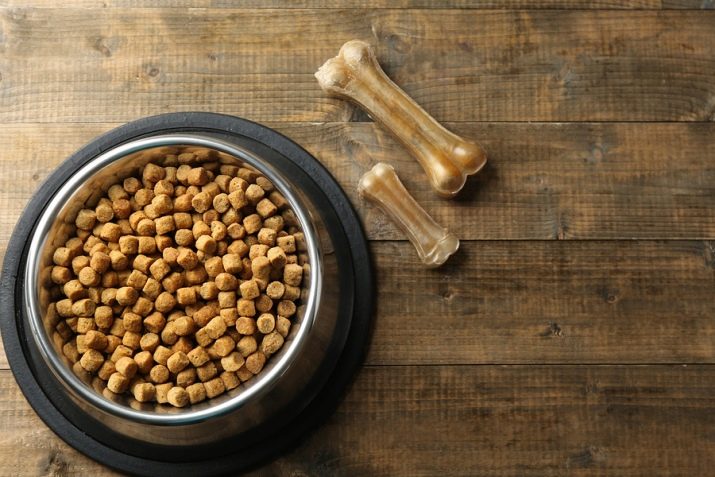
Like many other dog breeds, yagd terriers do not understand when to stop eating - the predator cannot be sure that the next prey will be soon, therefore it eats up to the dump, while there is such an opportunity. In the wild, this would hardly have hurt the dog, but when kept at home, a keen owner can easily feed a pet to a state of greasy and clumsy carcass, which will no longer be of any use in hunting.
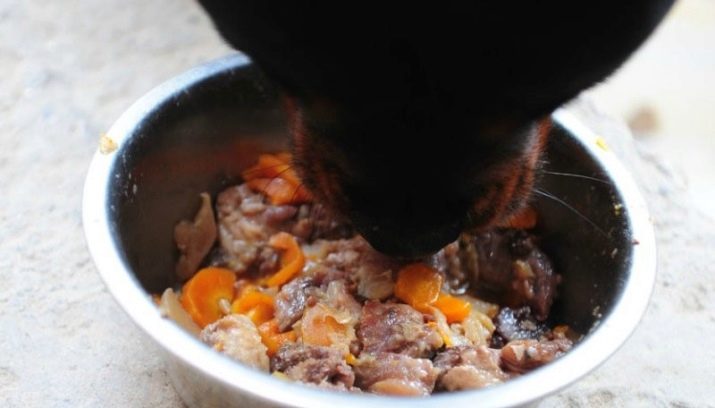
Even if you are not a hunter, bringing the dog to such a state is extremely undesirable - obesity leads to an increased load on the cardiovascular system and shortens the life of the pet.
Calculating the dosage of food is usually by eye, but keep in mind that in winter, individuals constantly living in open-air cages need to increase portions - it is possible to deal with cold only at the expense of additional calories. Experienced dog breeders indicate that if there is pure snow, it is better to give it instead of water.
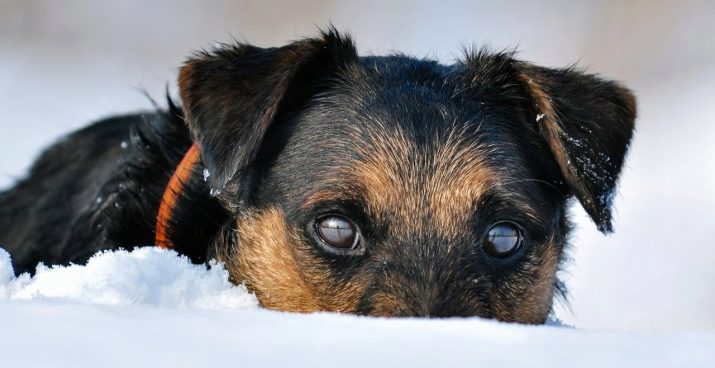
Parenting and training
You will need to start training a masterful yagdterrier from the first day you are in the house, otherwise he will consider himself the master of the situation. Certain rules of conduct for a new family member should be thought out before he appears in the house, as representatives of this breed lose respect for an illogical person who is able to dramatically change his views.
For the same reason, the requirement for compliance with the rules should be constant and mandatory, any concessions are unacceptable. Agree with all members of the household that everyone will react to the specific behavior of the dog the same way - then training will go much faster.
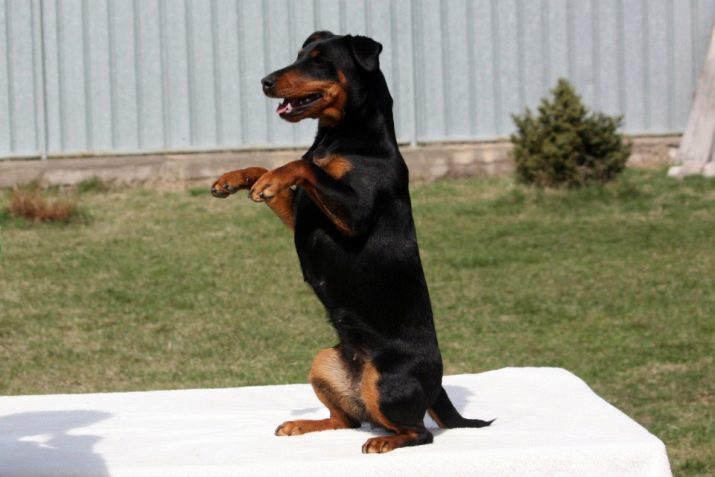
At the same time, it is unacceptable to treat an animal unfairly or cruelly.
Firmness and perseverance for the owner of the yagd terrier are mandatory character traitsotherwise, the uncompromising dog will not consider him a sufficient authority. It is unacceptable to gain authority with physical force, even if it seems to you that the dog does not want to carry out your commands meaningfully.
By allowing corporal punishment of a puppy or by repeatedly demonstrating injustice, you run the risk of running into a response when he grows up, and yet such an adversary is extremely serious and dangerous.

Certain manifestations of aggression, which sometimes occur in an unprepared yagd terrier, are completely inappropriate in society, therefore it is important to timely engage in the socialization of the baby - without this, you will have constant problems with it in the city. It is necessary to try to develop a normal reaction in the puppy to strangers and other animals - he should not see prey or enemies in everyone around. You can teach your pet to such rules already from the age of three months.
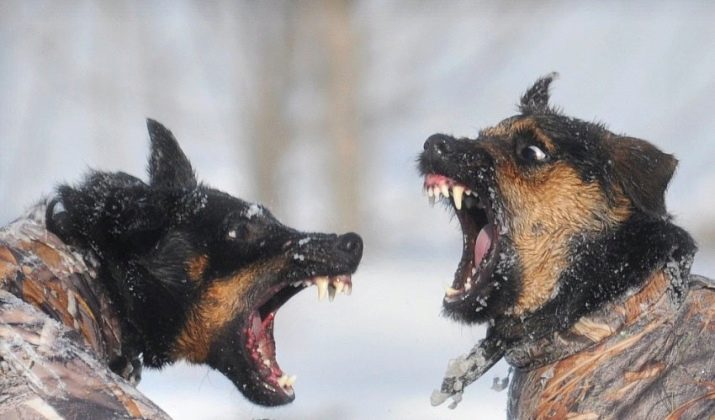
Training puppies as hunting dogs involves their own rules and begins a little later - tentatively from six months of age.
A properly trained yagd terrier becomes not only a friend, but also a real protector of the whole family, he can effectively guard private home ownership and be a desperate assistant to his master hunter. However, in order for the training to be successful and without incorrigible errors, it is better to entrust such a task to a specialist in their field. A professional knows how to subordinate a willful and aggressive dog to his authority, without breaking its psyche and without developing unnecessary bitterness in relation to the whole world.
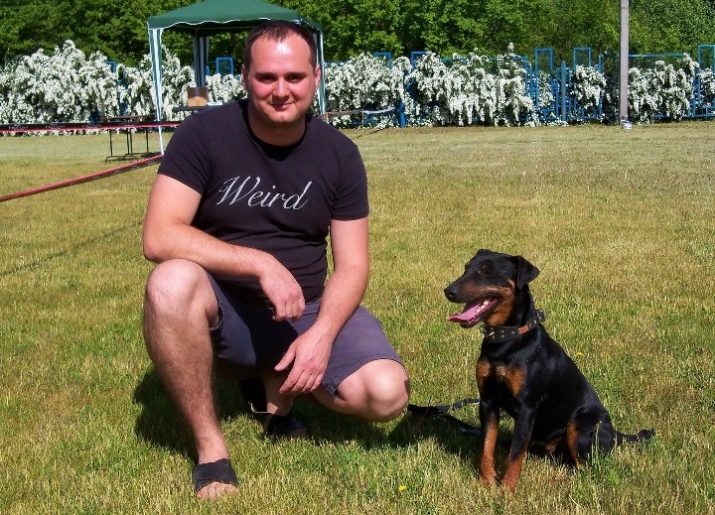
List of nicknames
The Jagdterrier is a fierce hunter who does not have excessive dimensionality or the pursuit of a stylish appearance. For the same reason, the nickname for him is chosen in such a way as to convey a harsh hunting entity. For boys, they most often choose foreign names, toponyms or derivatives of foreign words, meaning a certain characteristic praising the dignity of the dog. Given the German origin of the breed, often the dogs are given the corresponding nicknames-names - they sound organically Hans, Helmut and Dietrich.
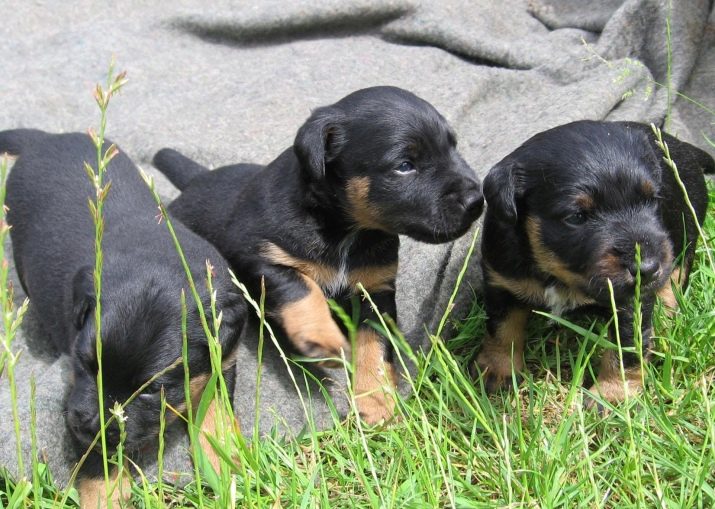
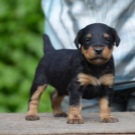
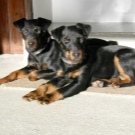
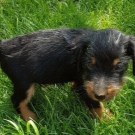


Do not invent too long and complex designs - the nickname should be short so that the pet can easily remember it, and you can confidently and quickly pronounce it in combination with any team.
For girls, German names are not chosen - theoretically, perhaps only Greta, but they are called various foreign names from other languages. The name sounds very bright Storm - it fully conveys the essence of the nature of the hunting dog and its restlessness. Unusual and original will be called a favorite Armor. Of the other popular options, we select Troy, Bagheera and Vesta.
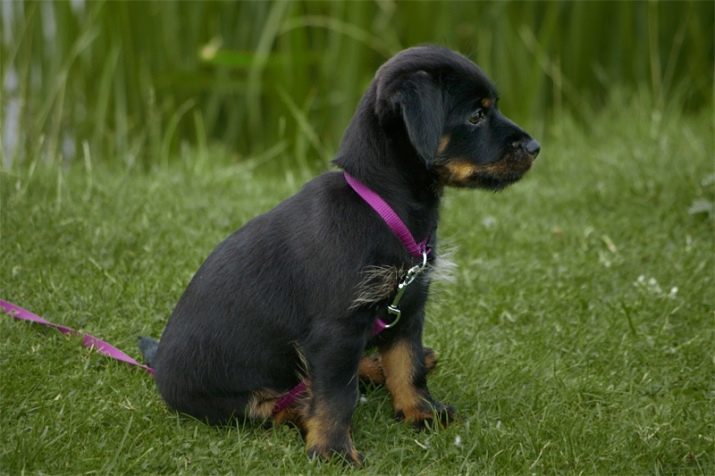
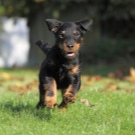
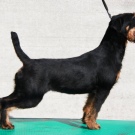

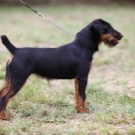
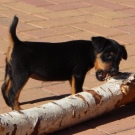
About the features of the breed of yagd terrier, see the video below.
